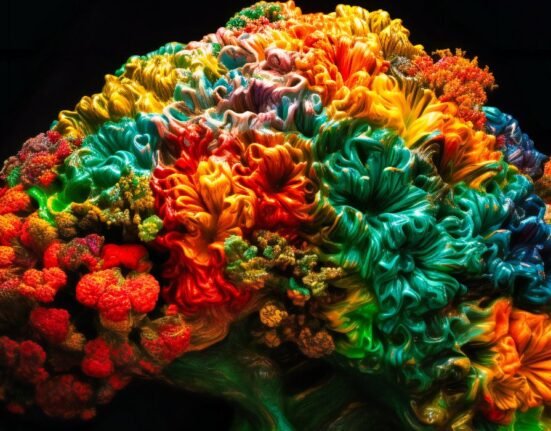Stigma? A Greek word, primordially referring to a mark burned into the skin to signify opprobrium, disapprobation and disgrace. This is what the phrasing Stigma surrounding mental illness alludes, that humans with a deteriorated mental health are encircled by a mark, symbolizing shame and infamy.
It’s time to descry and comprehend beyond the shallowness of the existence of a stigma around mental health. This is the time to apprehend and concede that, the entire buildup, all the root causes that led to the inception of the institution of stigma surrounding mental health, have now evaded. We need to discern that this system now exists not on the grounds of any potent rationales but solely due to our habit of adhering with it.
The genesis of the prejudice, discrimination and stereotypes against the mentally ill, was a repercussion of the erroneous understanding and explication of psychiatric disorders since the primeval age. The prehistoric cultures strongly held the credence that, mental illness was some form of demonic possession, vexation of gods, a consequence of planetary movements and gravitation, eclipses, sins and curses and that it was a process of penalizing those, who engaged in conduct contrary to the teachings of the time. The Greco-Roman thought, propounding that mental illnesses may arise from brain pathology, dysfunction or disease, imbalance in body fluids/ humors or hereditary was also disregarded. This connotation of mental illness led to the inculcation of fear and discrimination within the general population towards mental illnesses and the mentally ill, which grew over time. However, with advancements in research and evolution of the medical and scientific perspectives regarding mental illnesses over the centuries, it has been established that deterioration in mental health is a consequence of genetics, psychological traumas, life experiences, brain defects, injury to the brain, infections, prenatal damage, substance use, poor nutrition or exposure to toxins.
Approaches to treat mental sickness in the ancient and medieval ages comprised of a surgical intervention known as Trephination, which involved drilling or incising holes in the human skull to render space for the evil spirits to escape. The practice of bloodletting, purging and vomiting using leeches and venesection was believed to redress the bodily imbalances.
Exorcism, the technique in which evil spirits were cast out through starvation, prayer, flogging, lashing, noise-making, or through the use of certain toxins was extensively deployed. Mental asylums were established, wherein the ill were imprisoned, tortured and killed.
The technique of Insulin Coma Therapy, where patients were deliberately put into low blood sugar comas each day for several weeks, with the belief that the intensification of the insulin levels within the body would alter the brain function, was consistently utilized.
The Electroconvulsive Therapy, was utilized to produce seizures in the brain that would in turn, relieve the symptoms of the mental illness.
The utility of drugs like Metrazol, to trigger seizures that would often lead to myocardial damage, torn muscles, vertebral fractures, hypertension, memory defects, damage to the central nervous system and other adverse effects.
A crucial cause of the dread surrounding the occurrence of mental illness was the way it was treated. In addition, the claim that mental illnesses were in no way curable. The pain-inflicting, catastrophic, damaging, supernatural procedures that were made use of in an attempt to cure the symptoms lead people to resort to all probable ways through which they could protect themselves from the illness- people suffering from the symptoms preferred dying in silence rather than asking for help.
However, the contemporary management and treatment of mental health illnesses involve safe, effective, community oriented and holistic approaches- medications, psychotherapy and alternative practices. Mental illnesses are treatable today through therapy, biomedical treatment and increased access to support and care. With proper treatment, aid, and patience, the condition of the patients is not hopeless.
The invalid discernment that, the sick have knowingly and intentionally selected a life with symptoms, rather than without, leads to blame assigning on the patients in the view that they have a control over their illness. The belief that mental health issues are self inflicted and the comprehension that the ill are responsible for the way they are, leads to more stigma and less empathy.
It is pivotal to perceive mental health illnesses as akin to any other medical illness and that no one acquiescently chooses to suffer from a disease, disorder or disability, and that there’s no one to be condemned or penalized. It has been evidenced that symptoms manifested by the ill are not on their own will, but are exhibited due to the malfunction of their brain, mind and body, which can be resolved through proper treatment.
Isolation by friends, family or comrades due to their conception of mental illnesses as being uncertain and incorrigible further worsens and deteriorates the illness. The perspective, that the people suffering from a mental sickness can be unpredictable and erratic, hence it is better to avoid the mentally ill or maintain a distance from them, is inapt and heinous. Multiple researches reveal that succor and encouragement, lead to the initiation of a positive recovery graph for the ill. Empathy and exhortation from family and peers help them give rise to the desire and strength to recover.
Abandoning or eluding the ill is not a viable solution, being compassionate and educated about mental health is. Instead of locking them up in closed rooms for years, seeking pertinent treatment facilities which have been established over the passage of time for their recuperation is salient.
A copious amount of stigma, originated from the lack of mental health facilities accessible for the mentally ill. However, presently there are several mental health facilities: Outpatient and Inpatient Mental Health Units, Psychiatric Hospitals, Residential Mental Health Treatment, Psychiatry Clinics, Psychiatric Services in General Hospitals, Psychiatric Residential Centers (Half Way Homes), Substance Use Rehabilitation centers, Nursing Homes, Partial Hospitalization Programmes, Community Mental Health Centers, Dual Diagnosis Treatment Services, Telemental Health Services, Psychiatric Rehabilitation and Helpline Numbers. There are legions of facilities and services, provided for the mentally ill that work towards their treatment without the use of hostility, torture, or perilous approaches.
In addition to these facilities, there have been laws and acts established and enacted over the years to promote the welfare of the mentally ill in India: Mental Healthcare Act (2017), National Trust Act (1999), Persons with Disability Act (1995), Mental Health Act (1987), The Military Lunatics Act (1877), The Lunacy Act (1858), The Indian Lunatic Asylum Act (1858).
‘Mentally illness is inextricably linked to violence, unpredictability and menace’. This misconception has been prevalent in our societies since decades. This assertion has lead to the inception of a harsh stigma and an uncomfortable environment surrounding the mentally ill and the professionals treating them. The people suffering from mental illnesses are not dangerous, unpredictable or brutal, they are just humans who are in need to be understood and supported. According to population researches, most of the people with mental illnesses are not likely to be any more violent than the general population. Instead, those with a severe mental sickness are more likely to be victims of brutal crimes than the general population. There is a subset of people suffering from extremely severe mental illnesses who may resort to odd or aggressive behaviors, but their symptoms can be managed and rectified through a relevant treatment plan. The withal complications that arise in the mentally ill incorporating the emotional, physical, behavioral and cognitive symptoms can also be dealt with, in the mental health facilities.
Then there’s the viewpoint that mentally ill people are a hindrance to the human society. The conception that they are not capable of logical thinking and rational decision making, and are incompetent and unproductive in occupational settings has lead to invidious behaviour towards the mentally sick leading to denying them certain basic rights and fair conduct. People surmise that the mentally ill will still be incapable and inept even after undergoing treatment. However, it has been substantiated that most people with mental health issues are competent to resume work after a brief period of time following treatment. And, the ones with profound level of illness may be able to work under supervision involving tasks of realistic difficulty.
In addition to the negative consequences of public stigmatization, the occurrence of Self Stigmatization further aggravates the severity of the mental illness. The process initiates when an individual suffering from a mental illness internalizes the stereotypes, discrimination, negative attitudes and behaviour projected by the general population and direct them towards themselves. It is essential to concede that self stigma is a concomitant of public stigma, based on entirely alike principles, which reveals that the substratum of the practice has lost its existence, and is consistently surviving on the grounds of habit fixation.
This reveals that ‘the process of augmentation of stigma surrounding mental illness’, is being continued despite the evanescence of the foundations on which it was originally built.
Stigma surrounding mental illness portrays, a large establishment standing since decades on a broken foundation, letting loose its pieces gradually, making people suffer and die, vulnerable to the catastrophic destruction. There’s still time to abandon this building. Will you, or will you not?












Leave feedback about this